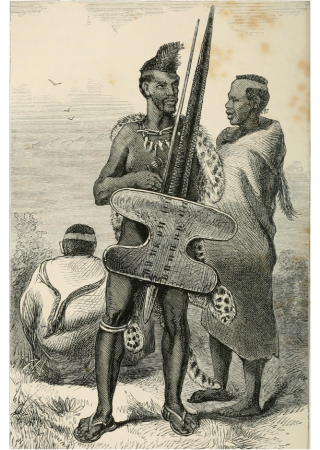Exploration of Africa
- ... Livingstone was the first white man to cross the Kalahari?
- ... while crossing the Kalahari, Livingstone discovered Lake Ngami, investigated its hydrological system and discovered that it had no outlet?
- ... Livingstone was the first person to cross the width of Africa in its southern part?
- ... Livingstone’s left hand was virtually immobile and he suffered severe pain in his left arm, because an infuriated lion had attacked him during one expedition and severely mauled his left shoulder?
- ... a mountain range in southern Tanzania, on the northeast shore of Lake Malawi is named after Livingstone?
- ... Livingstone discovered the source of the Congo and a series of rapids in Zaire on the Congo is named Livingstone Falls, in his honour?
- ... natives buried David Livingstone's heart under a tree near the place where he died, mummified his body and carried it on a slender tree trunk all the way to Zanzibar?
- ... in Zambia there is a David Livingstone museum, where every year commemorative celebrations are conducted in his honour?
- For his first expedition in 1849, Livingstone had 20 men on horseback and eighty draft bullocks.
- The ships used by Livingstone on his expeditions were the paddlewheel steamships Pioneer, Gorgon and Lady Nyasa.
- Editor Stanley looked for Livingstone for eight months and found him in the village of Ujiji.
- Livingstone died aged 60 of malaria.
- The journey on which loyal natives carried Livingstone's mummified body, from Chitambo in Zambia to the port city of Bagamoyo in Tanzania took nine months and measured over 1,500 kilometres.
- His travels and expeditions through Africa took place from 1849 to 1873.
In 1849 Livingstone undertook an exhaustive journey across the Kalahari Desert, at that time considered impassable. In 1852, he decided to cross the central African continent to the west shore. He crossed the upper tributary of the Kasai River, the Kwango and after an epic two year struggle, at the end of May 1854, arrived in Angolan Luanda, on the shore of the Atlantic. In October of 1854 he set out on a return trip by land. He descended to the Zambezi River and in June of 1855, arrived in Linyanti. A group of Makololo tribesmen accompanied him all the way to the mouth of the Zambezi. During this trip, he became the first European to see Victoria Falls, which he named. In March of 1856 he arrived in Tete, the outermost Portuguese trading post. In May he ended his transversal of Africa in Quelimane, Mozambique, on the shore of the Indian Ocean. Here the Zambezi flows into the sea. In 1859 he discovered Lake Njasu, and subsequently disappeared for more than four years. The publisher of the New York Herald, Gordon Bennett, sent the editor Henry Morton Stanley, another explorer, to find Livingstone in Africa. Stanley found him in the village of Ujiji after eight months of searching, on October 28th, 1871. However, he did not manage to bring Livingstone home. Livingstone died of malaria on May 1st, 1873 in the village of Chitambo, south of Bangweulu Lake. In 1878, his remains were interred with all honors in Westminster Abbey in London.



